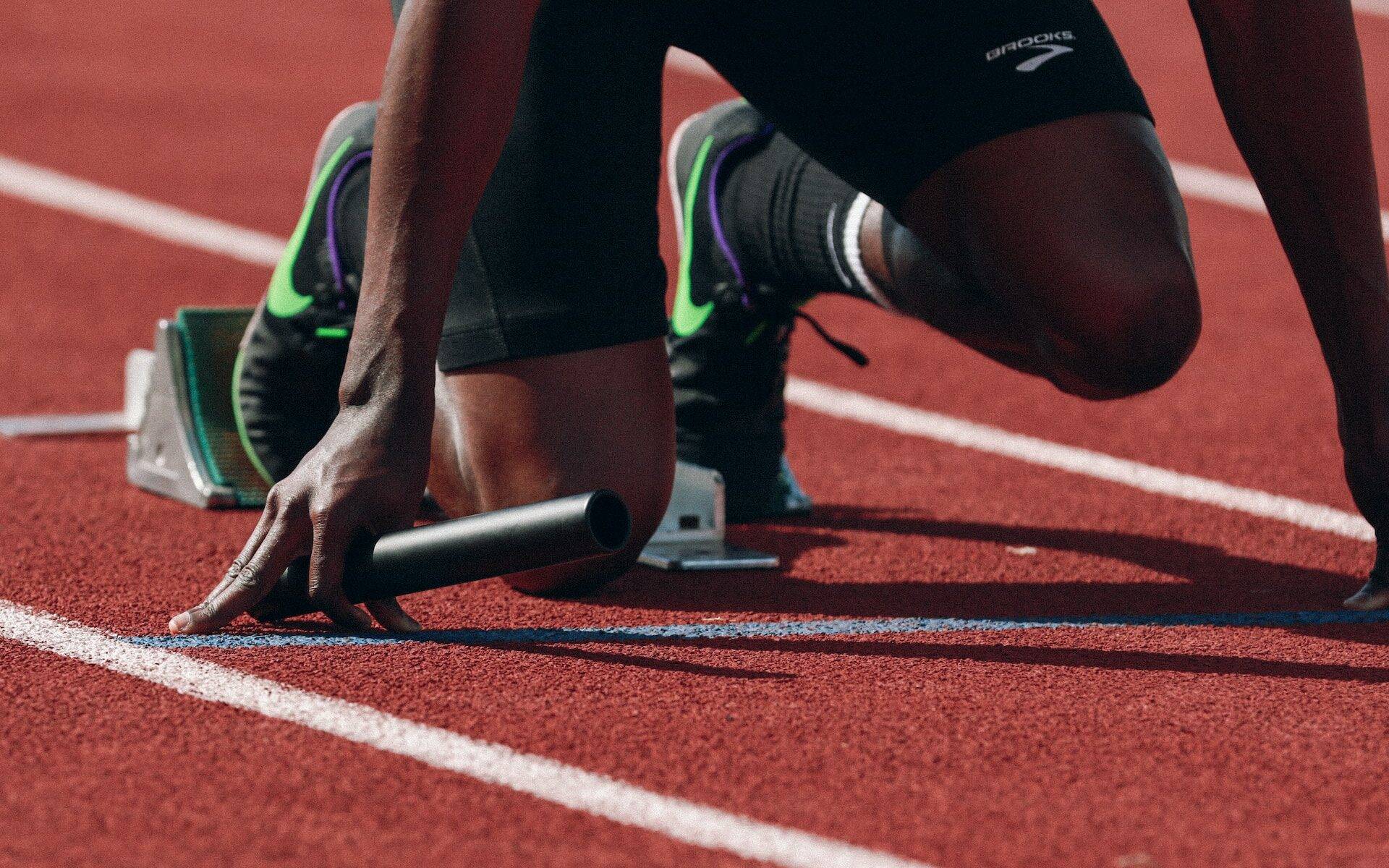A comprehensive guide to athletic scholarships. Learn about eligibility, application process, and tips for maximizing chances of securing financial awards.
In the competitive world of college admissions, athletic scholarships serve as a valuable opportunity for high school athletes to further their education while pursuing their passion for sports. This comprehensive guide aims to provide aspiring student-athletes with a roadmap to understanding the intricacies of athletic scholarships, offering an in-depth exploration of the eligibility criteria, application process, and tips for maximizing your chances of securing these coveted financial awards. Whether you excel in basketball, tennis, or any other sport, this guide will equip you with the knowledge and resources needed to navigate the complex terrain of athletic scholarships and unlock your potential for a brighter academic future.
Types of Athletic Scholarships
Full scholarships
Full scholarships are the most coveted type of athletic scholarships. As the name suggests, full scholarships cover all of the student-athlete’s expenses, including tuition, fees, books, room and board, and sometimes even provide a stipend for personal expenses. These scholarships are typically offered to elite athletes who have demonstrated exceptional talent and potential in their sport.
Partial scholarships
Partial scholarships, on the other hand, cover only a portion of the student-athlete’s expenses. The amount can vary significantly depending on the athlete’s skill level, the sport they participate in, the competition within their chosen sport, and the financial resources of the university or college offering the scholarship. While partial scholarships may not cover all expenses, they can still significantly reduce the financial burden on student-athletes and their families.
Walk-on scholarships
Walk-on scholarships are a unique type of athletic scholarship where the student-athlete initially does not receive any financial assistance but is given the opportunity to join the team. Walk-on athletes typically have to prove themselves through tryouts or other evaluations and may eventually earn a scholarship based on their performance and contribution to the team.
Requirements for Athletic Scholarships
Academic eligibility
Academic eligibility is a crucial requirement for athletic scholarships. Student-athletes must not only meet the minimum academic standards set by the university or college they wish to attend but also meet the academic eligibility criteria established by the athletic governing bodies, such as the National Collegiate Athletic Association (NCAA) or the National Association of Intercollegiate Athletics (NAIA). These standards typically include maintaining a minimum grade point average and completing a required number of high school courses.
Athletic eligibility
Athletic eligibility refers to the requirements related to the athlete’s skill level and performance in their sport. These requirements can vary depending on the division and level of competition. Student-athletes may need to meet certain athletic standards, such as achieving specific time records, hitting certain scores, or meeting size and strength requirements. Coaches and athletic departments evaluate potential recruits based on their performance in high school or club-level competitions.
Recruiting process
The recruiting process plays a significant role in the allocation of athletic scholarships. Coaches actively seek out talented students who possess the abilities and skills needed to strengthen their team. They evaluate prospective student-athletes based on their performances in games, tournaments, showcases, and sometimes even through video submissions. It is crucial for athletes to actively participate in the recruiting process by contacting coaches, attending organized camps and showcases, and showcasing their talents and abilities both on and off the field.
NCAA Division I Scholarships
Overview of NCAA Division I
NCAA Division I is the highest level of intercollegiate athletics within the NCAA and is known for its fierce competition and high-level athletic programs. Universities and colleges that participate in Division I athletics offer a wide range of athletic scholarships across various sports. Division I schools often have large budgets and can offer substantial financial assistance to their student-athletes.
Eligibility requirements for Division I scholarship
To be eligible for a Division I scholarship, student-athletes must meet a specific set of criteria outlined by the NCAA. These criteria include completing a certain number of high school core courses, achieving a minimum grade point average, earning a qualifying standardized test score (such as the SAT or ACT), and meeting specific amateurism requirements. Athletes must also register with the NCAA Eligibility Center and have their amateur status certified.
Benefits of Division I scholarships
Division I scholarships provide student-athletes with the opportunity to compete at the highest level of college athletics while receiving substantial financial support. These scholarships can cover the cost of tuition, fees, books, and room and board, ensuring that student-athletes can focus on their academics and athletics without worrying about the financial burden. Division I athletes also have access to state-of-the-art facilities, experienced coaching staff, and exposure to top-notch competition, which can enhance their athletic performance and future career prospects.
NCAA Division II Scholarships
Overview of NCAA Division II
NCAA Division II offers a balance between competitive athletics and academic excellence. Division II institutions generally have smaller enrollments and athletic budgets compared to Division I schools, but they still provide exceptional athletic programs and scholarships opportunities across a wide range of sports. Division II colleges and universities prioritize the overall student-athlete experience, emphasizing the importance of academics and a well-rounded education.
Eligibility requirements for Division II scholarship
Similar to Division I, Division II student-athletes must meet specific eligibility requirements set by the NCAA. These requirements include completing the necessary core courses, achieving a minimum GPA, earning a qualifying test score, and meeting amateurism requirements. Athletes must also register with the NCAA Eligibility Center for their eligibility to be determined.
Benefits of Division II scholarships
Division II scholarships offer student-athletes the opportunity to compete in competitive athletic programs while balancing their academic responsibilities. These scholarships can assist with the cost of tuition, fees, and sometimes even room and board expenses. Division II institutions often provide personalized attention to their student-athletes and offer smaller class sizes, allowing for greater interaction with professors and a more supportive academic environment. Additionally, Division II athletes have the chance to participate in postseason championships and showcase their talents on a national level.
NAIA Scholarships
Overview of NAIA
The National Association of Intercollegiate Athletics (NAIA) is another governing body for intercollegiate athletics in the United States. NAIA institutions are typically smaller colleges and universities that offer athletic scholarships across a variety of sports. The NAIA emphasizes the development of well-rounded student-athletes and places a strong emphasis on character, scholarship, and sportsmanship.
Eligibility requirements for NAIA scholarship
NAIA eligibility requirements differ slightly from those of the NCAA. Student-athletes must meet certain academic standards, including completing a required number of core courses and achieving a minimum GPA. NAIA athletes also need to meet specific amateurism requirements. NAIA institutions have some flexibility in determining their scholarship criteria, allowing them to consider factors beyond just athletic and academic performance.
Benefits of NAIA scholarships
NAIA scholarships provide student-athletes with the opportunity to compete in intercollegiate athletics at smaller institutions while receiving financial assistance. These scholarships can help cover the cost of tuition, fees, and sometimes even room and board. NAIA institutions often offer a supportive community and personalized attention to their student-athletes, fostering a strong sense of camaraderie and teamwork. The NAIA also promotes a healthy balance between academics and athletics, allowing student-athletes to excel both on and off the field.
Junior College Scholarships
Overview of junior college scholarships
Junior colleges, also known as community colleges, offer two-year programs and provide an excellent opportunity for student-athletes to develop their skills and gain exposure before transferring to a four-year institution. Junior colleges often have athletic programs and scholarships available across various sports, providing a stepping stone for student-athletes to compete at higher levels.
Eligibility requirements for junior college scholarship
Eligibility requirements for junior college scholarships may vary depending on the specific institution and conference. In general, student-athletes must meet the academic requirements set by the college, including high school completion and maintaining a minimum GPA. Additionally, junior colleges may have athletic standards and evaluation processes in place to determine scholarship recipients.
Benefits of junior college scholarships
Junior college scholarships offer student-athletes the opportunity to continue their athletic career while earning college credits and developing their skills. These scholarships can help cover the cost of tuition, fees, and sometimes even room and board. Junior colleges often provide individualized attention, smaller class sizes, and a supportive environment, allowing student-athletes to strengthen their academic foundation and prepare for a successful transfer to a four-year institution. Additionally, competing at the junior college level can attract the attention of coaches from higher-level programs and open doors to more competitive opportunities.
Finding Athletic Scholarships
Researching universities and colleges
One of the first steps in finding athletic scholarships is conducting thorough research on universities and colleges that offer programs in your chosen sport. Look for the ones that have a strong reputation in your sport, a supportive athletic program, and scholarships available. Make a list of potential schools that align with your academic and athletic goals.
Attending sports camps and showcases
Attending sports camps and showcases can be a great way to showcase your skills to coaches and scouts. These events provide opportunities for coaches to evaluate your abilities, and it allows you to demonstrate your commitment and work ethic. Be sure to research and choose camps and showcases that are reputable and target your specific sport.
Working with high school coaches and guidance counselors
High school coaches and guidance counselors can be valuable resources in the athletic scholarship search process. They have experience and knowledge about the recruitment process, and can provide guidance on scholarships and the necessary steps to take. Be proactive in seeking their advice and assistance, and keep them updated on your progress and accomplishments.
Writing a Strong Athletic Resume
Organizing your information
When writing an athletic resume, it is important to organize your information in a clear and concise manner. Include your contact information, academic achievements, athletic accomplishments, community involvement, and any other relevant details. Use a professional format and make sure your resume is visually appealing and easy to read.
Highlighting athletic achievements
When highlighting your athletic achievements, focus on quantifiable accomplishments. Include statistics, records, awards, honors, and any notable performances or achievements. Provide specific details that demonstrate your skills, commitment, and potential value to a college or university athletic program.
Including academic achievements
In addition to athletic accomplishments, it is essential to include your academic achievements on your athletic resume. Highlight your GPA, standardized test scores, relevant coursework, and any academic honors. Demonstrating academic success can showcase your ability to balance athletics and academics, which is highly valued by college coaches and admissions committees.
Preparing for the Athletic Scholarship Application Process
Meeting academic requirements
Meeting the academic requirements set by universities and colleges is crucial in the athletic scholarship application process. Stay focused on your coursework, maintain a strong GPA, and prepare for standardized tests. Stay in regular communication with your high school guidance counselor to make sure you are on track to meet the necessary academic standards.
Building a strong athletic portfolio
In addition to a well-crafted athletic resume, creating an athletic portfolio can strengthen your application. Include video highlights, game footage, and any other media that showcase your skills and abilities. A comprehensive athletic portfolio can provide coaches with a better understanding of your talents, especially if they are unable to see you compete in person.
Practicing for interviews and campus visits
The athletic scholarship application process often involves interviews and campus visits. Practice and prepare for these opportunities by researching the school, its athletic program, and the coaching staff. Be ready to articulate your goals, athletic journey, and reasons for wanting to join the program. Dress appropriately and conduct yourself professionally during campus visits to make a positive impression on coaches and administrators.
Common Mistakes to Avoid in Athletic Scholarships
Neglecting academics
One common mistake in the pursuit of athletic scholarships is neglecting academics. While athletic talent is important, colleges and universities also prioritize academic success. Failing to meet the necessary academic requirements can hinder your chances of securing a scholarship. Stay focused on your studies and make academics a priority throughout your high school career.
Not actively promoting oneself
Another mistake is failing to actively promote yourself to coaches and recruiters. Take the initiative to reach out to coaches, attend recruitment events, and provide updated information about your accomplishments and progress. Engage with coaches and express your interest in their program to demonstrate your commitment and enthusiasm.
Failing to follow up with coaches
Once you establish contact with coaches and begin the recruitment process, it is essential to follow up with them regularly. Respond to emails and phone calls promptly, provide requested information in a timely manner, and express appreciation for their time and consideration. Failing to follow up can leave a negative impression and may cause coaches to move on to other potential recruits.
In conclusion, athletic scholarships provide student-athletes with opportunities to pursue their athletic passions while obtaining a college education. Understanding the different types of scholarships, eligibility requirements, and scholarship search strategies is crucial for high school athletes wishing to secure financial assistance. By diligently researching potential institutions, highlighting their athletic and academic achievements, and actively engaging with coaches and recruiters, student-athletes can maximize their chances of obtaining their desired athletic scholarships.


